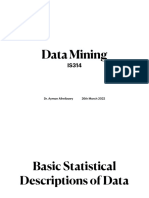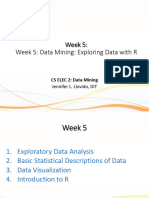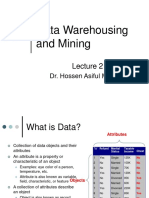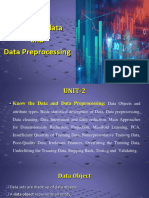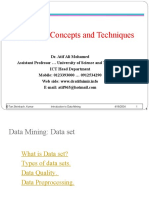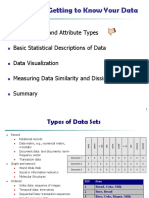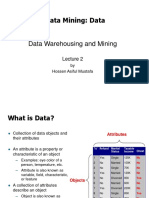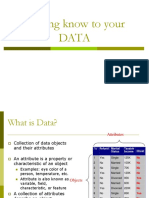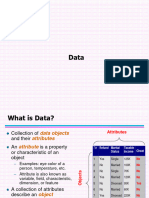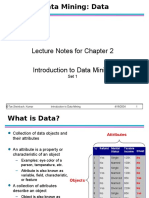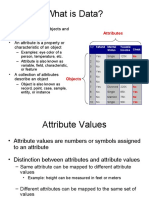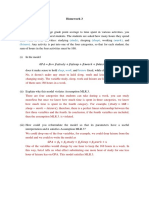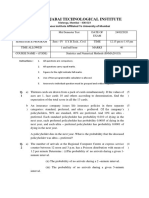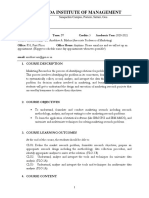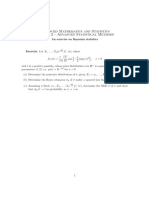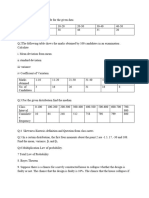0% found this document useful (0 votes)
48 views40 pagesData Preprocessing Guide
The document provides an overview of data preprocessing, including definitions of data, attributes, and types of attributes such as nominal, ordinal, interval, and ratio. It discusses the importance of understanding dataset characteristics, handling missing values, outliers, and the methods for data normalization and discretization. Additionally, it covers techniques for managing categorical and continuous attributes, as well as measures of similarity and dissimilarity in data analysis.
Uploaded by
l225000Copyright
© © All Rights Reserved
We take content rights seriously. If you suspect this is your content, claim it here.
Available Formats
Download as PDF, TXT or read online on Scribd
0% found this document useful (0 votes)
48 views40 pagesData Preprocessing Guide
The document provides an overview of data preprocessing, including definitions of data, attributes, and types of attributes such as nominal, ordinal, interval, and ratio. It discusses the importance of understanding dataset characteristics, handling missing values, outliers, and the methods for data normalization and discretization. Additionally, it covers techniques for managing categorical and continuous attributes, as well as measures of similarity and dissimilarity in data analysis.
Uploaded by
l225000Copyright
© © All Rights Reserved
We take content rights seriously. If you suspect this is your content, claim it here.
Available Formats
Download as PDF, TXT or read online on Scribd
/ 40
